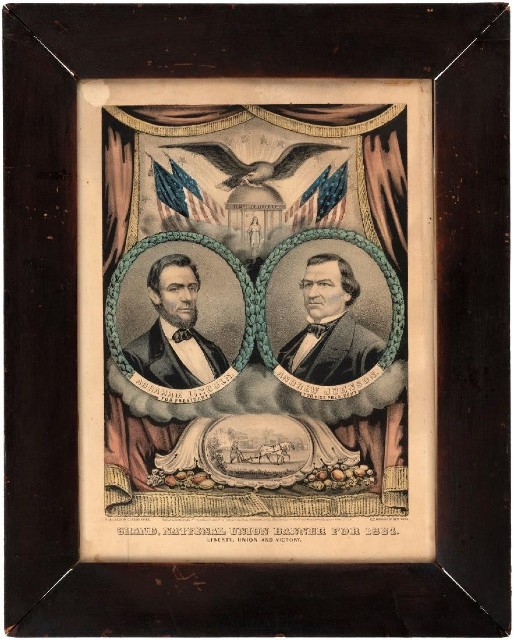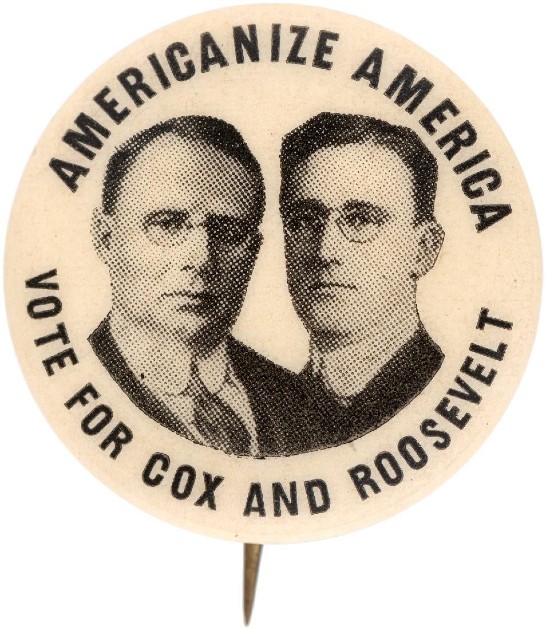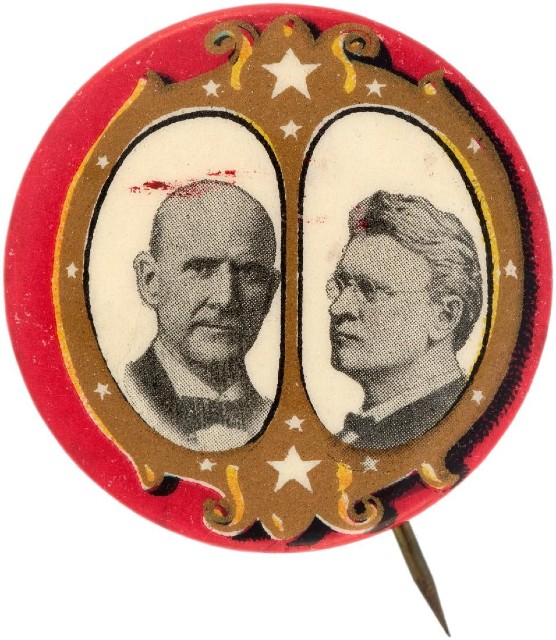
NEW YORK – Pinback buttons have long been a top political collectible that were designed for people to show off their support for a particular candidate. They are highly sought after with campaign jugates among the most desirable.
From the Latin word, jugatus, meaning joined, jugates are basically campaign items that show two pictures side by side. These are most commonly buttons but there are also banners, badges, postcards and pennants. According to the American Political Items Collectors website, this term describes any campaign item where two candidates are depicted, and while it is usually a president and vice-president candidate, sometimes it’s for a governor and lieutenant governor.
Proving that sometimes two is better than one, campaign jugates often are more desirable because they have two faces, not just one. Ted Hake of Hake’s Auctions in York, Pa., has been fascinated with campaign items and pinback buttons since 1961. He noted that the term “jugate” is a term seldom used outside the field of political collecting.
“Collectors like jugates because they sort of tell the story of the election. You’ve got the presidential candidate right next to the vice presidential candidate so it sums up the election all on one object,” he said.
Before the advent of photography, there were campaign ribbons and textiles as well as medals or tokens (terms often used interchangeably) but pinback buttons quickly superseded the latter, Hake explained. Early fabric textiles remain well collected owing to their rarity, a factor that plays into most political collecting where scarcity often trumps design and color. “Currier and Ives would make what was called a campaign print every four years (in the 19th Century) showing the candidates of the two major parties,” said Hake. “They also made jugate prints for that so a jugate can be anything from a street banner to a little half-inch token.”

Among top-selling jugates is a massive Grant & Colfax jugate campaign banner, measuring 47 by 34½ inches, one of three known variations. “Although two smaller Grant & Colfax varieties were issued, this design, with names below the portraits, is unique to our experience,” according to Heritage Auctions, which auctioned off an example in October 2017 for $32,000 + the buyer’s premium.
Campaign buttons debuted in 1861 when buttons featuring a ferrotype image of Abraham Lincoln were used but they were not mass-produced until 1896 for the William McKinley-William Jennings Bryan race. That was the year a New Jersey firm patented a pinback celluloid button and with printing costs reasonable, campaign teams could afford to buy in bulk and give them out widely.
One of the most desirable – described as the holy grail of jugates – is a jugate button made for the 1920 presidential election featuring the Democratic presidential ticket of James Cox, governor of Ohio, as the presidential nominee, and his running mate Franklin Roosevelt. The button pictures the two candidates under the slogan, Americanize America. “For some reason, probably because it cost a few more pennies to put the second picture on a button, very few Democratic organizations across the country ordered any Cox-Roosevelt jugates,” Hake said, noting that perhaps the few that survive today were samples made by button companies. “In any case, they’re all scarce and some are quite rare. There are basically eight different designs and sizes but even if you have the most common one, you’re looking at $10,000 or more.” Hake’s sold a 13/16-inch one in November 2017 for $40,067, which was briefly the world record auction price for a celluloid button (a 1916 Red Sox button with Babe Ruth holds the record).

Of the six Cox-Roosevelt button varieties ranging from ⅝ inch to 1 1/4-inches, four are unique or have less than three known examples. “These varieties have long been locked in major collections and the nine examples owned by the Cox family media empire are unlikely to ever change hands,” according to Hake’s in its 2017 auction catalog description for the button.
Hake said the world record auction price for this button with both pictures is $50,000 but if he had one in the 1¼ inch size, it likely could sell for more than $100,000.

Each campaign has both common buttons and rare ones so collectors can decide depending on their budget, how deep they want to get into it … “whether you want to specialize in a particular candidate or maybe you want to just have one button from each major party for each election,” Hake said. One can find a common jugate going back 125 years for William McKinney for $25 or one can find rare ones that will probably be $2,000 and up. The same holds true for most candidates up until about the 1960s, when prices drop in value.

For collectors of more recent jugates, finding pieces with a built-in rarity – made for a single-day event – will make all the difference. “Typically for a presidential campaign, it would be a rally in a particular place at a particular time,” Hake said. “All those particulars limit that button in production so they don’t need 25,000 made, if only 1,000 people are coming to the rally. So if you have a dated button, you often have built-in rarity and that gives it a little leg-up in terms of future appreciation.”
Together with Christen Carter, Ted Hake has co-authored a new book titled Button Power. Click to learn more.
# # #



